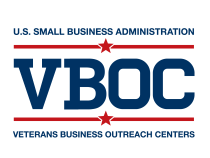There are a number of reasons to have a business plan including: providing a guide to you and your employees on what to do, when to do it and how to do it, proving you with an evaluation tool for making strategic choices, providing bankers and investors the information they need when you are looking for funding and providing you with analysis tool before investing time and financial resources.
A business plan should be created at the onset of your business venture an updated on a regular basis.
Use the following outline to assist you with your business plan:
1. Executive Summary
• This section should be written last. 1 to 2 paragraphs in length
• Overview of business, marketplace, management, assumptions, long-term strategy, loan amount and effect of loan on business (if applicable), estimate of 1st and 2nd year revenue
2. General Company Description
• Who are you? What do you do?
• Mission statement
• Company goals and objectives
• Your business philosophy – what is important to you in business?
• Your product or service
• Value proposition (include your meaning)
• Technology platform, if any
3. Proposed Location
• Proposed location
• Why proposed location was selected?
• Advantages/disadvantages of proposed location
4. Industry and Market Analysis
• Industry description and analysis (across the US, your State, your City), trends and strategic opportunities
• Description/profile of ideal customer
• Why was this target market selected?
• Size of market (# of potential customers)
• Anticipated growth of market
• Names of your key competitors
• Strengths and weaknesses of key competitors
• Your competitive advantage
• Your anticipated market share
5. Marketing Strategy
• Product/service strategy
• Pricing strategy
• Advertising and promotion
• What is your distribution network? How will your product or service reach your customers?
6. Production/Operations/Manufacturing
• Production facility
• Production schedule
• Inventory control
• Financial control
7. Management
• Description of background and experience of owner and key managers and the roles they will assume in your business
• Professional advisors – your Circle of Influence
8. Personnel
• Description of full-time personnel (number, duties, wages, etc.)
• Types of part-time personnel
• Outside contractors, etc.
9. Long-Term Development and Exit Plans
• Long-term business development goals (1-year, 3-year, 5-year horizons)
• Action Plans
• Timing
• Risk evaluation and management
• Exit Plan
10. Financial Data
• Cash Flow Projections (at least 2 years), including assumptions and notes
• Income Projections (2 years), including assumptions and notes (Profit and Loss)
• Balance Sheet
• Break-even analysis
11. Use of Loan Funds
• Breakdown of how the loan would be used
• Repayment schedule
12. Appendix (optional)
• Resumes of key managers
• Letters of intent/key contracts
• Endorsements/testimonials
• Market research results
• Marketing materials
• Other supporting materials
